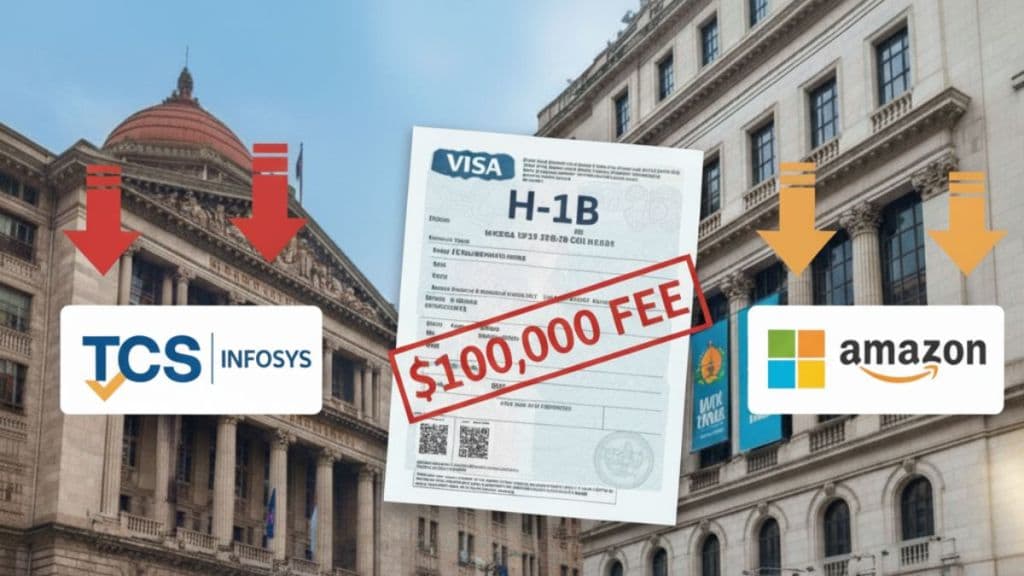On September 19, President Trump announced a $100,000 fee on all new H-1B visa petitions. India is the country most affected, having received 71% of all H-1B visas last year. The primary firms affected by the fee are IT firms – both Indian and American companies.
Both Indian and American tech firms were negatively affected by the announcement of the fee. Two of the largest Indian tech firms that use H-1B visas are TCS and Infosys. In the one week following the fee announcement, TCS stock fell by 8.9% and Infosys stock fell by 6.1%.
An uneven impact on Dalal Street and Wall Street
Two of the largest US tech firms that use H-1B visas are Amazon and Microsoft. Amazon’s stock price fell by 4.9%, while Microsoft’s stock price fell by 1.4%, following the fee announcement. Why are US tech firms less affected?
The salary divide: A story in numbers
Here, looking at H-1B salary data is instructive. For TCS and Infosys H-1B employees, the average annual salaries are $78,000 and $71,000, respectively. For Amazon and Microsoft H1-B employees, the average annual salaries are $143,000 and $141,000, respectively.
Here’s another way to look at this: For the Indian tech firms, the fee is around twice as high, relative to the salaries received by the employees. As a result, Indian tech firms are much more exposed to the fee affecting their bottom lines.
The outlook for Indian tech firms using H-1B visas is poor. The policy is likely to shift towards granting visas to firms paying the highest salaries. The current $100,000 fee is a step in that direction.
A strategic silence from Silicon Valley
It’s instructive that US tech firms have not protested the fee. H-1B visas are granted using a lottery system. If the fee discourages applications (particularly Indian tech firms), it increases the likelihood of a US tech firm getting a visa. Thus, they may be happy to pay the fee to improve their odds.
A silver lining for domestic hiring?
If there’s an upside, the Indian tech firms may end up hiring more workers domestically. Domestic employment of IT workers will replace at least of the some the H-1B visas that won’t be issued. If the tech firms successfully adjust their business models, their stock prices will more than recover. Thus, the current drops could present good investment opportunities.
On a broader note, there’s still considerable uncertainty on who the fee applies to. For example, it is unclear if Indian students in the US on an F-1 visa or OPT are affected. What is clear is that Indian tech firms are negatively affected, at least for now.
The visa effects were felt well beyond the tech sector. In the one week following the announcement, the rupee fell 0.6% against the dollar. The Nifty index fell by 2.7%. Currently, the rupee is at a record low, reflecting the impact of both US tariffs and the new visa fees. Meanwhile, gold continues to hit new records, recently surpassing $4,000 per ounce. We remain a market environment of strong economic fundamentals combined with heightened uncertainty.
Disclaimer:
Note: The purpose of this article is to share interesting charts, data points and thought-provoking opinions. It is NOT a recommendation. If you wish to consider an investment, you are strongly encouraged to consult your advisor. This article is for strictly educative purposes only.
Asad Dossani is an assistant professor of finance at Colorado State University. His research covers derivatives, forecasting, monetary policy, currencies, and commodities. He has a PhD in Economics. He has previously worked as a research analyst at Equitymaster, and as a financial analyst at Deutsche Bank.


